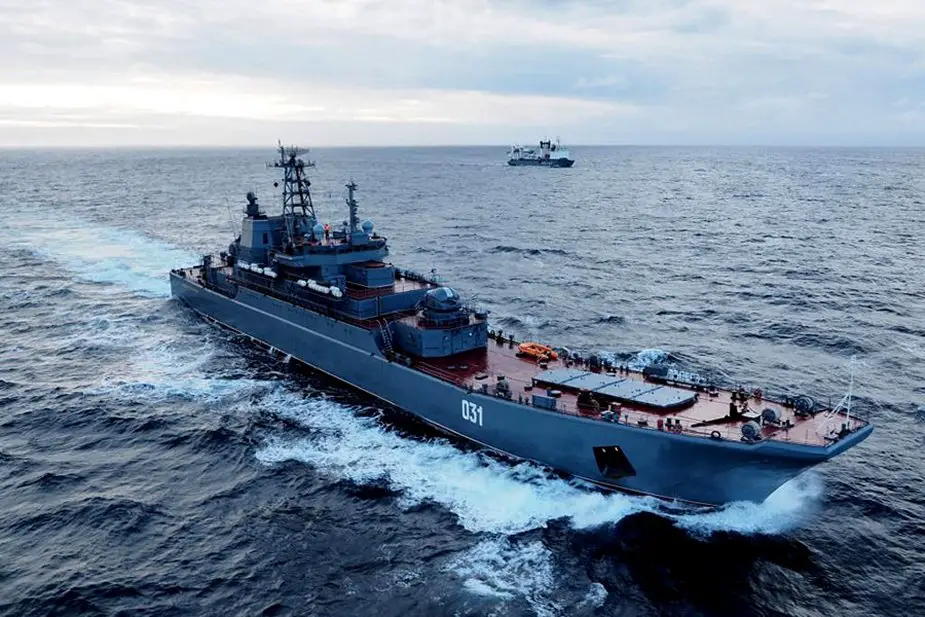Breaking news
Three Russian Navy's warships complete Arctic expedition.
According to information published by Tass on October 11, 2022, Northern fleet warships returned to Severomorsk after sailing over nine thousand nautical miles in the Arctic.
Follow Navy Recognition on Google News at this link
 Russian Ropucha class landing ship Alexander Otrakovsky. (Picture source: Russian MoD)
Russian Ropucha class landing ship Alexander Otrakovsky. (Picture source: Russian MoD)
The Admiral Levchenko big antisubmarine ship, the Alexander Otrakovsky and the Ivan Gren big amphibious assault ships, and the Sergey Osipov tanker returned to Severomorsk main base of the fleet from another Arctic voyage under the command of Northern fleet Deputy Commander Vice Admiral Oleg Golubev.
Northern fleet Commander Admiral Alexander Moiseev welcomed the ships back and congratulated with a successful mission. The warships have sailed in two months practically the whole Northern Sea Route from the Barents to the East Siberian Sea.
The warships trained defending Arctic islands and the mainland against hostile amphibious assault. They landed their own assault in the northernmost Chelyuskin Cape.
It held a joint exercise with the tactical forces deployed in Kotelny and Alexandra Land Islands to destroy groups of hostile warships. The warships also held a counterterrorist exercise on Prirazlomnaya ice-resistant stationary platform.
Admiral Levchenko is a Russian destroyer of the Udaloy class. The ship was laid down in 1982 and was commissioned in the Soviet Navy in 1988. After the fall of the Soviet Union the ship continued to serve in the Russian Navy with the Northern Fleet.
About the Ropucha class landing ship Alexander Otrakovsky
The Ropucha class (Polish for Toad), Soviet designation Project 775, is a class of landing ships (large landing ship in Soviet classification) built in Poland for the Soviet Navy.
The ships were built in Poland in the Stocznia Północna shipyards in Gdańsk. Designed for beach landings, they can carry a 450-ton cargo. The ships have both bow- and stern-doors for loading and unloading vehicles, and the 630 square metres (6,800 sq ft) of vehicle deck stretches the length of the hull. Up to 25 armored personnel carriers can be embarked.
While designed for roll-on/roll-off operations, they can also be loaded using dockside cranes. For this purpose there is a long sliding hatch-cover above the bow section for access to the vehicle deck. There are no facilities for helicopters.




























